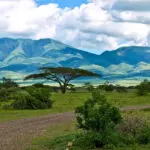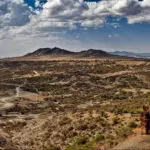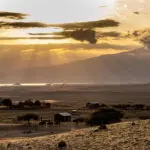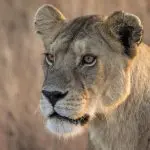Tanzania boasts two of Africa’s most iconic safari destinations: the Ngorongoro Crater and the Serengeti. Each location possesses many wonders, underlined by the region’s remarkable diversity. The Ngorongoro Crater, famed as the world’s largest intact volcanic caldera, offers a breathtaking, enclosed landscape teeming with wildlife. In contrast, the Serengeti is celebrated as one of the greatest natural theaters on Earth, renowned for its incredible wildlife migration that unfolds across its vast, untamed plains.
Many travelers planning a visit to Tanzania will be left wondering which attraction they should prioritize. Will you be drawn to the sanctuary-like environment of Ngorongoro, where animals are abundant, or will the endless horizons of the Serengeti beckon you with their wild allure? Both locations are unparalleled in their beauty and provide experiences that are hard to find anywhere else. Let’s explore what makes each destination special and why your Tanzanian safari adventure should really include both!
If the blog below leaves you itching to begin planning your adventures in Tanzania, be sure to browse our full selection of African Safaris in Tanzania.
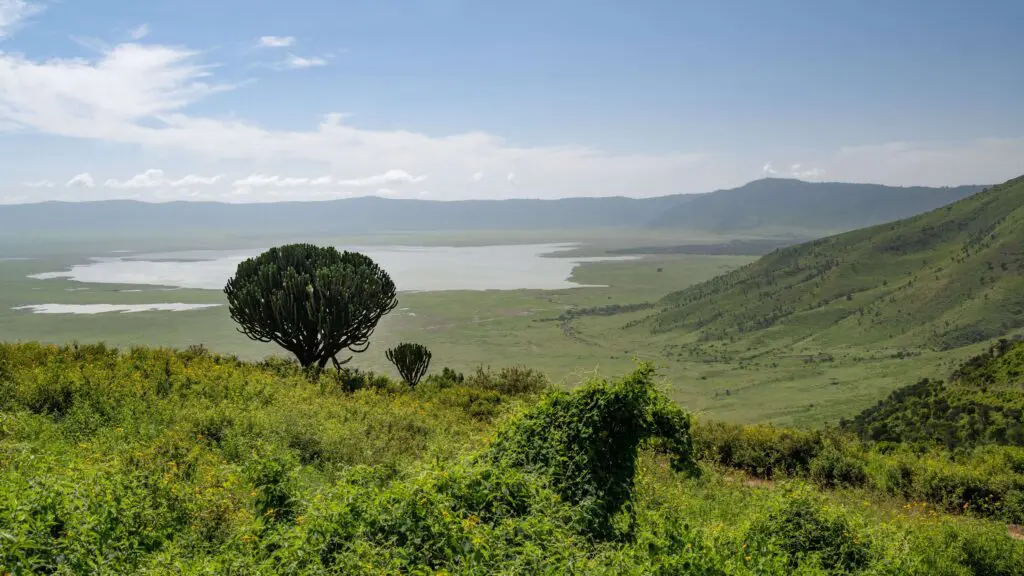
How Was the Ngorongoro Crater Formed?
The Ngorongoro Crater (125 square miles) is a part of the larger Ngorongoro Conservation Area (3,200 square miles). The Crater is the largest intact volcanic caldera in the world, a geological marvel that dates back millions of years. It was formed approximately 2.5 million years ago when a massive volcano, believed to have been as tall as Mount Kilimanjaro, erupted and collapsed inward. This catastrophic event created a vast, bowl-shaped depression that stretches 20 kilometers across and plunges 600 meters deep.
Over time, the natural enclosure filled with fertile soil, water sources, and abundant vegetation, establishing a matchless habitat for wildlife. Today, it is one of the most densely populated animal areas in Africa, serving as a microcosm of the Serengeti ecosystem. The crater’s structure acts as a natural barrier, providing a self-sustaining environment where wildlife can thrive year-round.
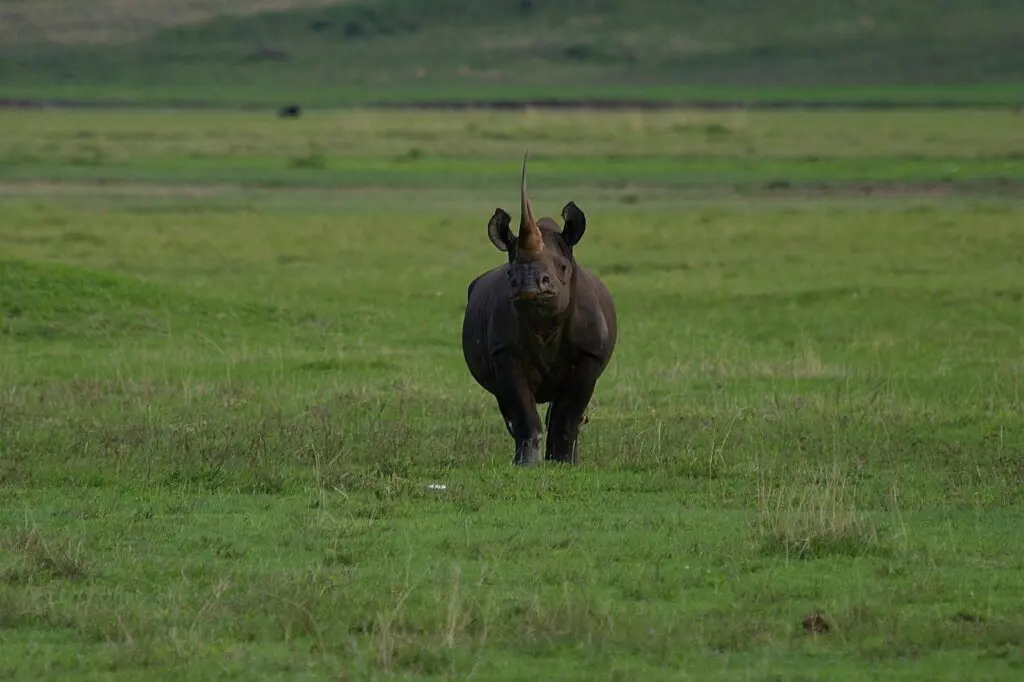
Ngorongoro’s Ecological Significance as a UNESCO World Heritage Site
Designated as a UNESCO World Heritage Site in 1979, the Ngorongoro Conservation Area is a remarkable region where humans and wildlife coexist in harmony. The floor of the crater supports an estimated 25,000 large animals, including lions, hyaenas, elephants, and the critically endangered black rhino. One of its most notable features is Lake Magadi, a shallow soda lake that attracts flocks of flamingos and other waterbirds, contributing to the area’s incredible biodiversity.
In addition to its wildlife, the greater Ngorongoro area is home to the Maasai community, who continue to practice traditional pastoralism within the conservation boundaries. This coexistence emphasizes the cultural and ecological significance of the region. The UNESCO designation ensures that the area remains protected for future generations, preserving its delicate balance of wildlife and human heritage.
If you are traveling with Pristine Trails, you can add a Maasai Community Visit to your safari.
Why Ngorongoro Is Guaranteed to Cast a Spell Over You
The Ngorongoro Crater provides one of the most concentrated wildlife-viewing experiences in Africa (or the world, for that matter). Its singular enclosed ecosystem allows for easy spotting of animals, even during a short visit. From prides of lions lounging in the grass to herds of buffalo and zebras grazing peacefully, the crater offers a safari experience like no other. The views from the crater rim are spectacular, offering sweeping panoramas of this natural amphitheater.
As mentioned above, visitors can also engage with the Maasai people through cultural tours, gaining insights into their traditions and lifestyles. The combination of the crater’s natural beauty, abundant wildlife, and cultural importance makes it a destination that leaves a lasting impression on all who visit.

Why Is Serengeti a Top Tourist Attraction?
The Serengeti stands as one of the most celebrated wildlife destinations on Earth. Spanning an area of 18,641 square miles, this iconic ecosystem supports a truly vast array of species, from the world’s largest lion population to the elusive leopard, elephants, giraffes, and so many more. However, it’s the annual Great Migration that draws global attention.
Every year, over two million wildebeest, zebras, and gazelles traverse its plains in search of greener pastures, braving treacherous river crossings and prowling predators. This natural phenomenon is widely regarded as the largest and most dramatic wildlife migration in the world. The Serengeti’s significance goes beyond tourism — it plays a critical role in global conservation, preserving one of the last remaining strongholds for large-scale mammal migrations. For those who wish to experience the majesty of the Serengeti in the company of expert local guides, we recommend our Tanzania Sights & Sounds Tour.
The Serengeti’s World Famous Wildlife Diversity
The Serengeti’s landscapes are as varied as its wildlife. Its expansive grasslands dominate the scenery, providing ideal hunting grounds for predators such as cheetahs and hyenas. Yet, the park also features wooded savannahs, seasonal swamps, and rocky outcrops known as kopjes, where lions bask in the sun.
This diversity of habitats supports a remarkable range of species, including over 500 bird varieties, from secretary birds stalking the plains to Fischer’s lovebirds flitting among acacia trees. The Serengeti’s plains are not just the backdrop for the Great Migration — they also serve as the birthplace for countless young animals, particularly during the calving season in February. The ecosystem’s delicate balance showcases the interplay between predator and prey.
Why Serengeti Will Leave You in Awe
What sets the Serengeti apart is its sense of endless space and the sheer abundance of life. The sight of animals roaming freely across the vast plains, uninterrupted by human development, is nothing short of breathtaking.
The Serengeti is also an ideal destination for travelers seeking diverse safari experiences, from thrilling game drives to hot air balloon rides offering aerial views of the park’s sweeping landscapes. The sunsets here are legendary, casting the plains in hues of gold and crimson as herds move to waterholes in the cool of the evening. (For those interested, Serengeti Hot Air Balloon Trips can be added to our safari tours.)
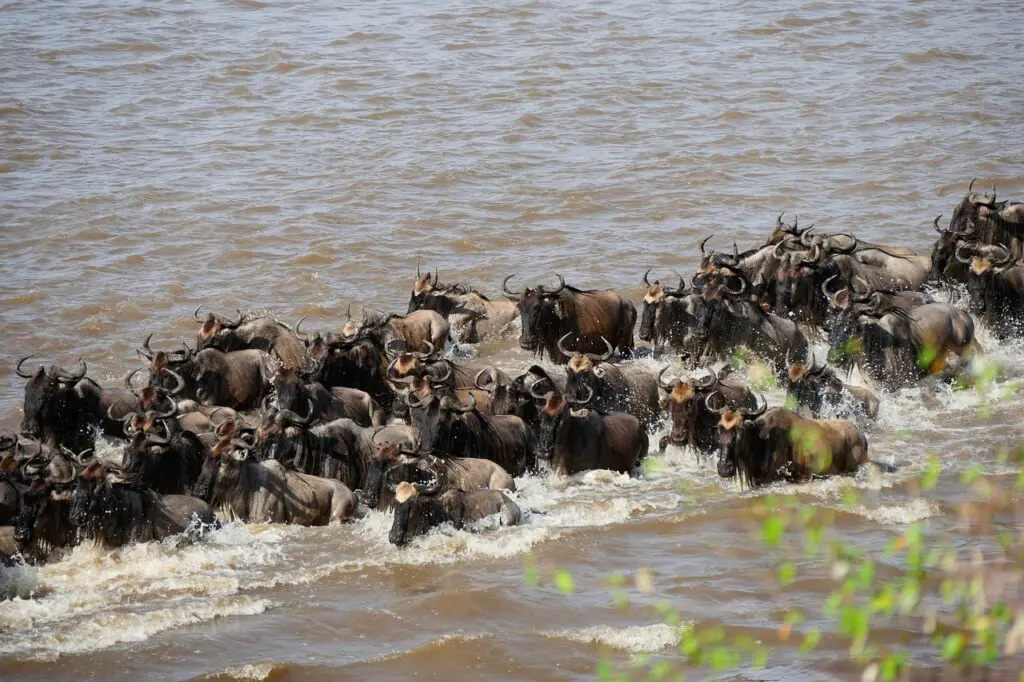
Ngorongoro vs. Serengeti: A Side-by-Side Comparison
Both Ngorongoro Crater and the Serengeti are remarkable safari destinations, yet they offer distinctly different experiences. Ngorongoro Crater, with its compact size and unique enclosed ecosystem, presents unparalleled opportunities for spotting wildlife within a short timeframe. This makes it an ideal choice for travelers with limited time or those seeking a more focused game drive. On the other hand, the Serengeti’s vast expanse and rich diversity allow visitors to witness grand natural events, such as the Great Migration, while exploring various habitats over several days.
Its volcanic origins define Ngorongoro, whereas the Serengeti is renowned for its open plains and breathtaking horizons. Both locations serve as sanctuaries for the “Big Five,” but the Serengeti’s immense scale and migratory spectacles provide a broader understanding of nature’s interconnectedness.
Why You Don’t Have to Choose: Visit Both!
One of the greatest advantages of going on a safari in Tanzania is that you don’t have to pick between two incredible destinations — they beautifully complement each other. The close proximity of the Serengeti to Ngorongoro makes it easy to include both in your itinerary, giving you a well-rounded experience of Tanzania’s wildlife and stunning landscapes. Traveling through these areas allows you to appreciate the magic of East Africa.
A typical safari itinerary often starts at Ngorongoro, where you get an engaging introduction to Tanzania’s wildlife in a dramatic, self-contained setting. From there, you can head into the Serengeti to experience the thrill of its vast plains and the wonder of the migration. Many visitors also choose to extend their adventure by stopping at Tarangire National Park or the picturesque tropical beaches and islands off of Tanzania’s expansive coast, like Zanzibar, creating a truly diverse journey.
At Pristine Trails, we specialize in tailoring unique safari experiences that include both destinations, ensuring you capture every moment of Tanzania’s magic. Our knowledgeable guides, fully equipped vehicles, and deep understanding of the local landscape guarantee a seamless journey that enhances your enjoyment. Take a look at our African Splendour Safari Tour to better understand how you can enjoy both of these destinations as part of one epic journey.
If you have any questions about our tours or services, don’t hesitate to get in touch.
